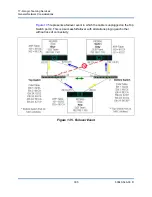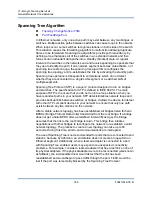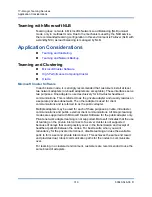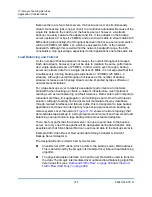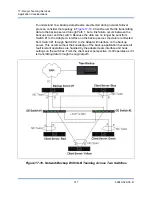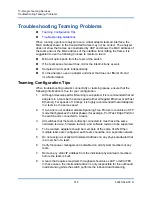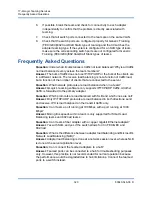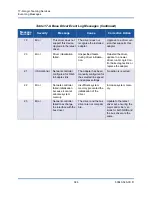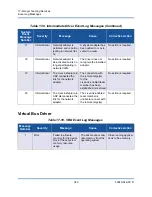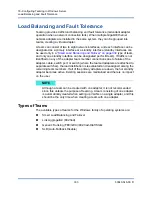
17–QLogic Teaming Services
Troubleshooting Teaming Problems
318
83840-546-00 D
Troubleshooting Teaming Problems
When running a protocol analyzer over a virtual adapter teamed interface, the
MAC address shown in the transmitted frames may not be correct. The analyzer
does not show the frames as constructed by ASP and shows the MAC address of
the team and not the MAC address of the interface transmitting the frame. It is
suggested to use the following process to monitor a team:
Mirror all uplink ports from the team at the switch.
If the team spans two switches, mirror the interlink trunk as well.
Sample all mirror ports independently.
On the analyzer, use an adapter and driver that does not filter QoS and
VLAN information.
Teaming Configuration Tips
When troubleshooting network connectivity or teaming issues, ensure that the
following information is true for your configuration.
1.
Although mixed-speed SLB teaming is supported, it is recommended that all
adapters in a team be the same speed (either all Gigabit Ethernet or all Fast
Ethernet). For speeds of 10 Gbps, it is highly recommended that all adapters
in a team be the same speed.
2.
If LiveLink is not enabled, disable Spanning Tree Protocol or enable an STP
mode that bypasses the initial phases (for example, Port Fast, Edge Port) for
the switch ports connected to a team.
3.
All switches that the team is directly connected to must have the same
hardware revision, firmware revision, and software revision to be supported.
4.
To be teamed, adapters should be members of the same VLAN. When
multiple teams are configured, each team should be on a separate network.
5.
Do not assign a Locally Administered Address on any physical adapter that
is a member of a team.
6.
Verify that power management is disabled on all physical members of any
team.
7.
Remove any static IP address from the individual physical team members
before the team is built.
8.
A team that requires maximum throughput should use LACP or GEC\FEC.
In these cases, the intermediate driver is only responsible for the outbound
load balancing while the switch performs the inbound load balancing.


